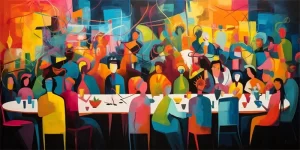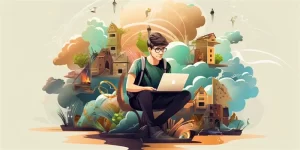Parallel Worlds, a feature in many visual novels, presents an exciting opportunity for players to immerse themselves in alternate realities. These alternate realities, often depicted through captivating storylines and stunning visual artwork, offer a unique and enthralling experience. In this article, we will delve into the intriguing concept of parallel worlds in visual novels, exploring their significance, mechanics, and popular examples.

Significance of Parallel Worlds
Parallel worlds serve as a narrative device that enables visual novels to explore complex themes and offer a divergent storytelling experience. By presenting alternate realities, visual novels can challenge the conventions of traditional storytelling, allowing players to navigate through multiple timelines, make consequential choices, and witness the repercussions of their actions in different dimensions.
Additionally, parallel worlds provide an avenue for visual novels to tackle philosophical questions regarding the nature of existence, identity, and the butterfly effect. Players are given the opportunity to contemplate the notion of self, morality, and the consequences of their choices as they navigate through various realities.
Exploring Mechanics in Parallel Worlds
Parallel worlds in visual novels are typically accessed through unique mechanics that enhance gameplay and storytelling. Time travel, dimensional portals, or mystical artifacts are often used to transport players between different dimensions. These mechanics allow players to delve into the intricacies of parallel worlds, discovering new storylines, characters, and outcomes that diverge from the main narrative.
Furthermore, visual novels may incorporate a branching narrative structure, where the choices made by players dictate the direction of the story. This interactive element adds depth and replayability to the experience, as players can explore different parallel worlds by making different decisions. The outcome of each choice can dramatically alter the course of the story and lead to unforeseen consequences.
Popular Examples of Parallel Worlds in Visual Novels
One notable example of parallel worlds in visual novels is the critically acclaimed “Steins;Gate” series. This science fiction epic follows a group of scientists who discover the ability to send text messages to the past, thereby altering events in different timelines. As players navigate through these parallel worlds, they uncover a complex and emotional story that explores themes of love, sacrifice, and the ethical implications of time travel.
Another noteworthy title is “Zero Escape: Virtue’s Last Reward.” This gripping visual novel incorporates parallel worlds through a game known as the “Nonary Game.” Players must solve puzzles and make life-or-death decisions in order to escape various timelines and uncover the truth behind the mysterious facility they are trapped in. The game’s intricate storytelling and mind-bending plot twists keep players on the edge of their seats.
Frequently Asked Questions
1. Can parallel worlds in visual novels affect the main narrative?
Yes, parallel worlds can have a significant impact on the main narrative of a visual novel. The choices made by players in alternate realities can influence character relationships, story outcomes, and even determine the game’s multiple endings.
2. Are there visual novel tools or software available for creating parallel worlds?
Yes, there are several visual novel creation tools that allow developers to incorporate parallel worlds into their narratives. Ren’Py, one of the most popular visual novel engines, provides the necessary tools and scripting capabilities to implement complex branching storylines and parallel world mechanics.
3. Do all visual novels with parallel worlds feature time travel?
No, although time travel is a common element in visual novels with parallel worlds, it is not a prerequisite. Parallel worlds can be accessed through various mechanisms, such as dimensional portals, magical artifacts, or even psychological transitions, providing diverse storytelling possibilities.
Conclusion
The concept of parallel worlds in visual novels opens up a vast realm of possibilities for storytelling and player interaction. By delving into alternate realities, players can explore different narratives, make consequential choices, and contemplate profound philosophical questions. Through mechanics like time travel and branching narratives, visual novels bring these parallel worlds to life, crafting captivating and memorable experiences that challenge the boundaries of traditional storytelling.
References
– “Steins;Gate” (game), Nitroplus, 2009.
– “Zero Escape: Virtue’s Last Reward” (game), Chunsoft, 2012.








